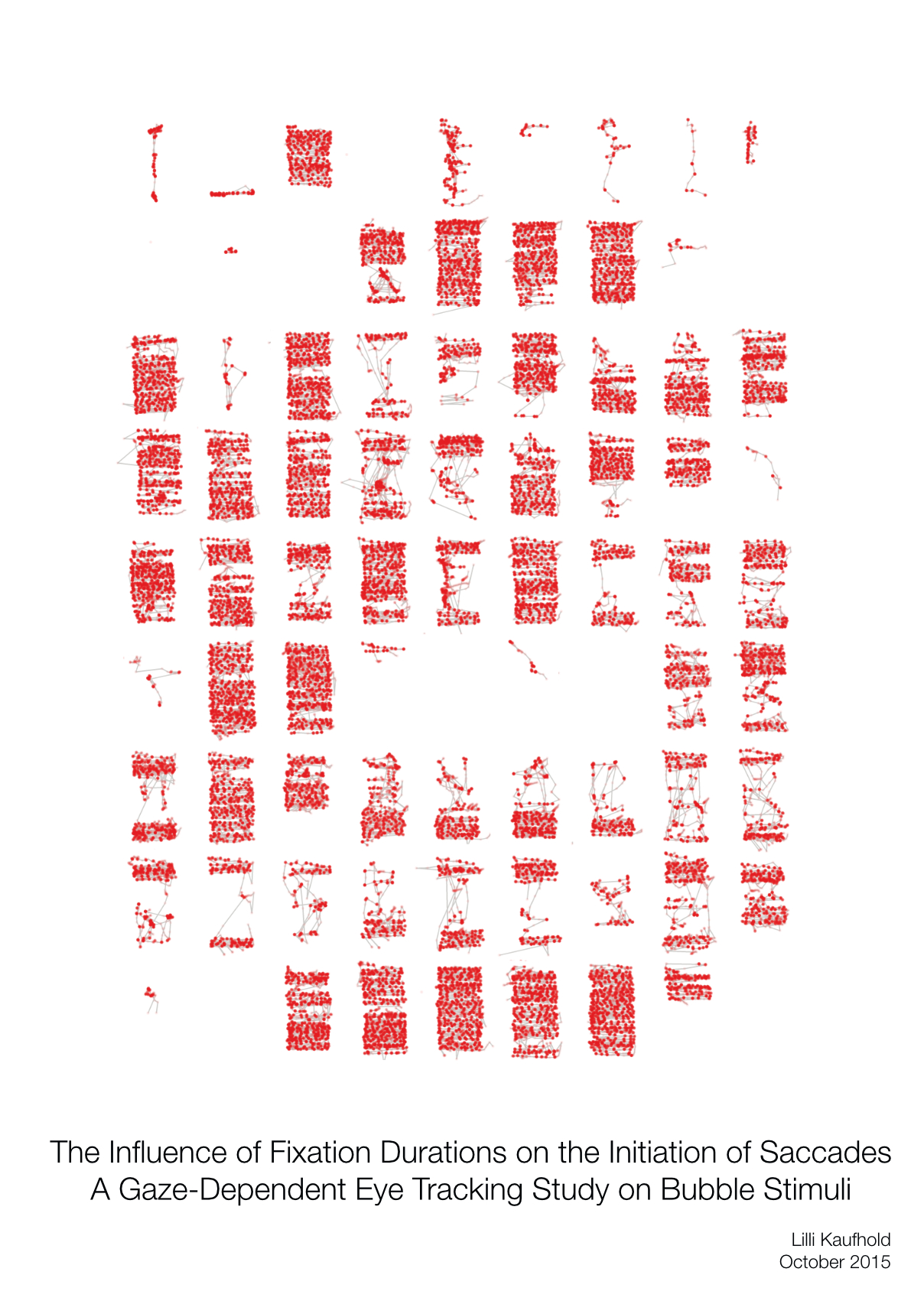The influence of Fixation Durations on the Initiation of Saccades
for Lilli Kaufhold
Lilli Kaufhold’s thesis examines where and for how long we look at things. More technically, she also investigated the relation of saccade eye-movements and Hick’s law. The accompanying Thesis Art piece visualizes the thesis through multiple miniatures, each representing an eye-movement of Benedikt reading the thesis, offering a meta perspective on eye-movements in a study about eye-movements.
The Creation Process
In this Thesis Art piece, Benedikt recorded his eye movements while reading the thesis. Each dot on the miniatures — which are all pages of the thesis — represents a “fixation”, a lingering of the gaze on a specific spot, illustrating the focus of attention of the reader throughout the thesis. This method allows the audience to experience the data in a visually engaging way, offering insights into the reading process itself.
Artistic Concept
The visual concept arose from Benedikt’s desire to explore the theme of eye-movements in a literal and meta way: “The project itself, based on eye-movement research, felt like a perfect opportunity to apply eye-tracking to the thesis creation process”, he says. The multiple miniatures represent an abstract yet structured view of the thesis, emphasizing the relationship between gaze, attention, and the material.
“Eye-movements on an eye-movement thesis — it was the meta-project approach that made this piece so unique.”
Benedikt Ehinger
Personal Reflection
Benedikt reflects on the labor-intensive process of data collection and the challenges faced in creating the visualizations. The eye-tracking aspect was particularly challenging as it required programming a new experimental setup and spatially synchronizing the thesis text with the eye-tracker. As Benedikt notes, “This project turned out to be one of the most labor-intensive in terms of data collection, but it is a whole different style, not directly visualizing the glyphs, but rather the work in its entirety.”
